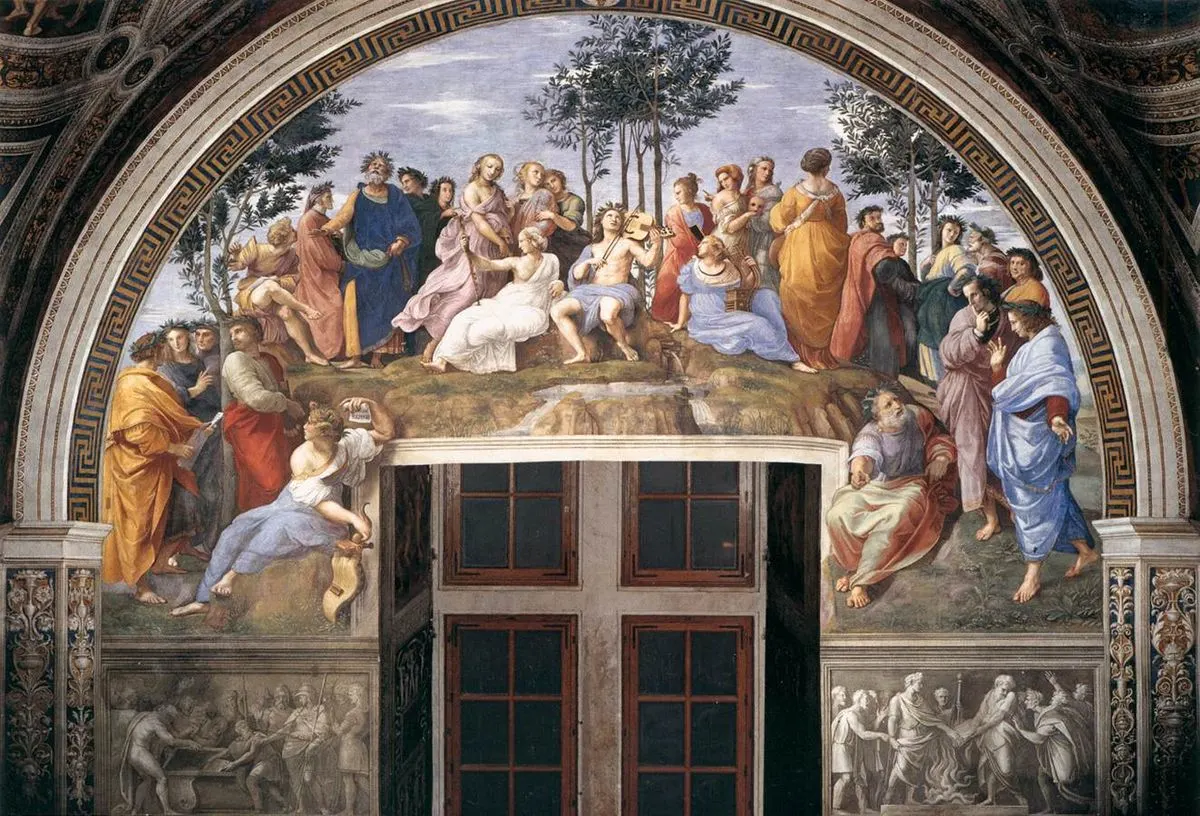When Raffaello Sanzio da Urbino, better known as Raphael, moved to Rome in 1508, the renowned Renaissance Artist was instantly given the commission to decorate 4 rooms at the Apostolic Palace by Pope Julius II.
These rooms were supposed to become the Pope’s private library but are now referred to as the “Raphael Rooms” or “Stanze,” and are part of the Vatican Museum in Vatican City.
Raphael worked actively on frescoes in 3 of the 4 rooms until his death in 1520, after which his workshop continued the work to complete the paintings in all 4 Stanze.
Let’s take a closer look at one of the most famous works of art that decorate the walls of the Vatican Palace called the Parnassus by Raphael.
1. The Parnassus is located in the first room that was decorated
The first room to be painted at the Apostolic Palace was the so-called “Stanza della Segnatura.” This room contains one of the most famous works of art created during the High Renaissance called “The School of Athens.”
Even though this was to become the private library of Pope Julius II, the highest office of justice of the Catholic Church was located here originally called the “Signatura of Grace.” This is the reason why the room was called like this.
The Parnassus is located on the north wall of the room and the other two frescoes in this room are “The Disputation of the Holy Sacrament” and “The Cardinal Virtues.”
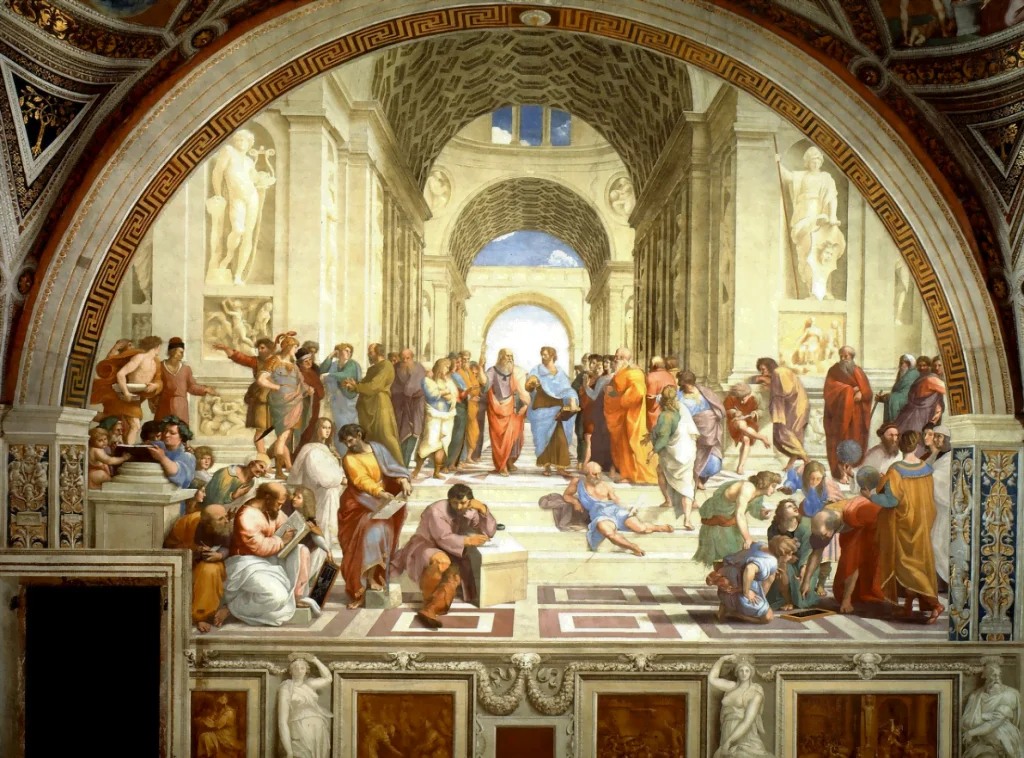
2. It’s assumed to be the second fresco that he worked on
The first fresco to be completed in the “Stanza della Segnatura” was probably “La Disputa,” followed by “The Parnassus,” “The School of Athens,” and finally the “Cardinal virtues.”
It took about 2 years for Raphael to create these paintings, all of which he completed between 1509 and 1511.
3. The Parnassus is an enormous painting

One of the most amazing facts about The Parnassus by Raphael, and the Raphael Rooms in general, is the sheer size of these works of art. They cover the entire wall of these relatively large rooms and most of the ceilings are decorated as well.
The Parnassus has a total width of 670 centimeters (260 inches). What’s remarkable as this isn’t the biggest painting in the room. The School of Athens, for example, has a width of 770 centimeters (300 inches) and a height of 500 centimeters (200 inches).

4. It represents one of the 4 areas of human knowledge
The Raphael Rooms each have their own subjects and the “Stanza della Segnatura” is dedicated to the 4 pillars of human knowledge, theology, philosophy, justice, and poetry.
The subject of The Parnassus is poetry and the title refers to “Mount Parnassus,” a mythical mountain in central Greece.
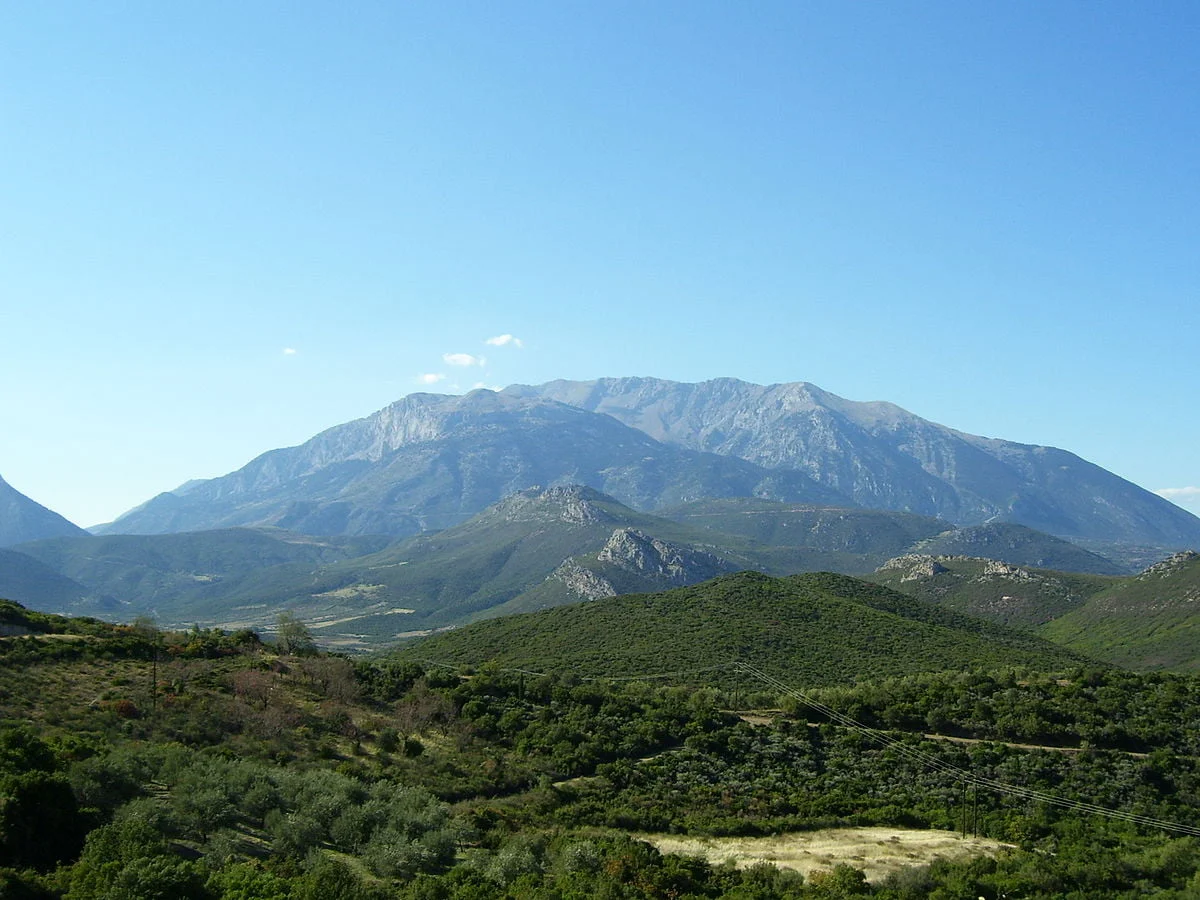
5. The God of Poetry is depicted in the center
The central figure of the painting represents Apollo, one of the deities of classical Greek and Roman religion and mythology. Mount Parnassus is where it was believed that Apollo resided in ancient times.
Surrounding Apollo we can see 9 muses, the inspirational goddesses of poetry and arts in general, 9 famous ancient poets, and 9 famous contemporary poets.
6. Apollo doesn’t use an Ancient Greek instrument
One of the most interesting facts about The Parnassus by Raphael is that Apollo isn’t playing the Ancient Greek instrument he was supposed to use called the “lyre,” a string instrument used in Ancient Greece.
Instead, Raphael chose to depict him playing a contemporary but similar instrument called the “Lira da braccio.” He probably did so because this instrument was often used by Italian poet-musicians for lyric and narrative poetry.
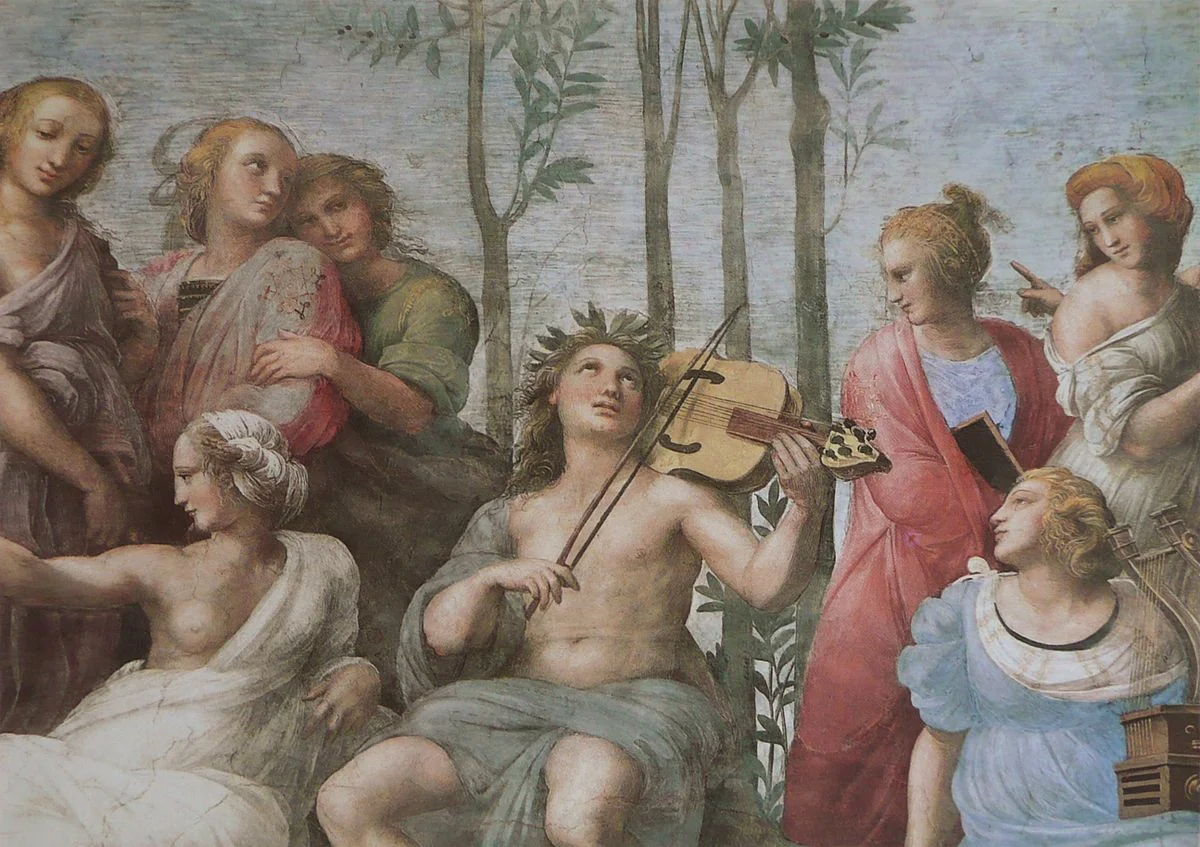
7. Raphael got his inspiration for Homer from a famous statue
Homer, the presumed author of two of the most famous classical poems called the Ilyas and the Odyssey is depicted in a blue robe standing on the left of Apollo from the viewer’s perspective.
Raphael used the face of a famous classical statue that was excavated just a few years earlier in Rome in the year 1506 called “Laocoön and His Sons.” The statue was described in great detail by Pliny the Elder when it was decorating the palace of Roman Emperor Titus around the year 80 A.D.
The statue was presumed to be created by 3 Greek sculptors on the island of Rhodes and is now on public display in the Vatican Museums.
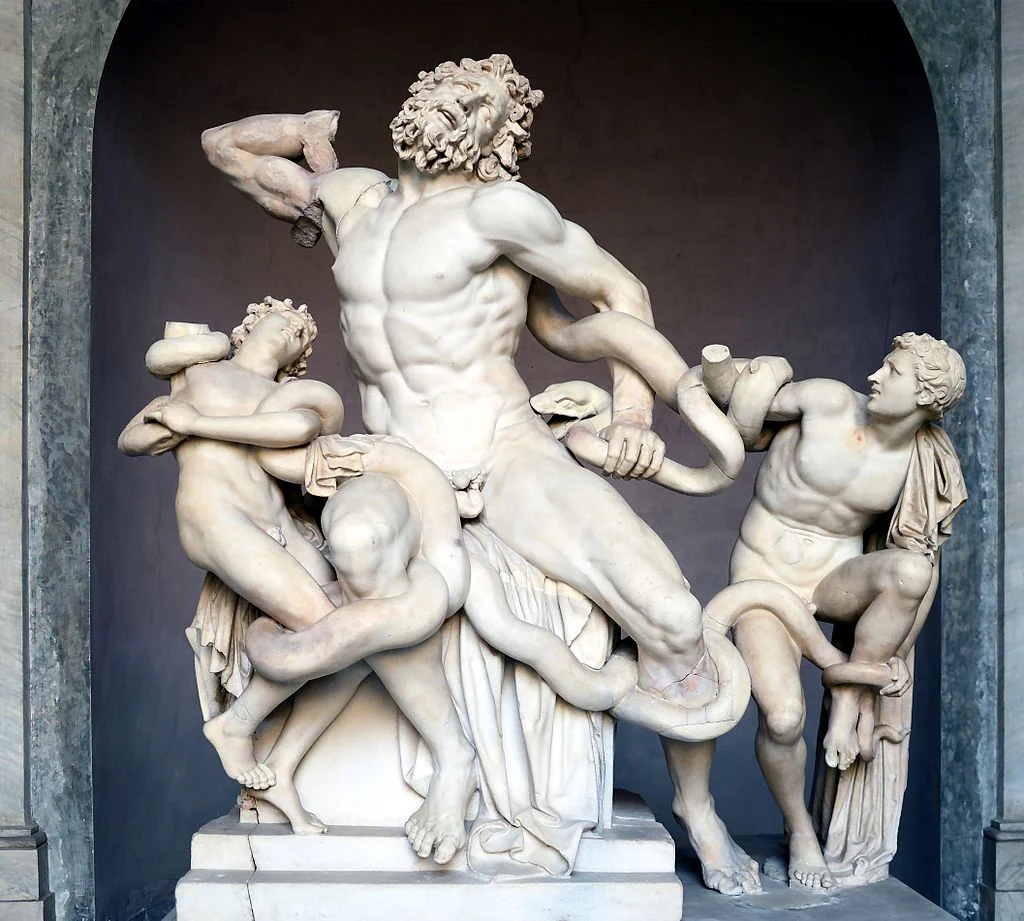
8. Perhaps he took a peek in the room next door before painting two females
Each artist has his own ways of finding inspiration. Leonardo da Vinci often scoured the jails in Milan to paint the faces of men. Michelangelo took it a step further and acquired dead bodies from the Santo Spirito convent’s hospital in Florence to perform anatomical studies.
Looking at other famous works of art was clearly a strategy Raphael used often to find inspiration for his own works. While creating The Parnassus it’s believed that he used the face of a female in The Creation of Adam painting to depict Euterpe and Sappho.
This painting was created at around the same time and is located just next door in the Sistine Chapel at the Apostolic Palace!
9. There’s only one female poet depicted in The Parnassus
The only identifiable female in the painting is Sappho, a classical Greek poet from the Greek Island of Lesbos who lived in the 7th and 6th centuries B.C.
She can be identified positively because she is holding a scroll with her name on it. She is probably identified in such a clear manner as not to confuse her with the 9 muses who surround Apollo.
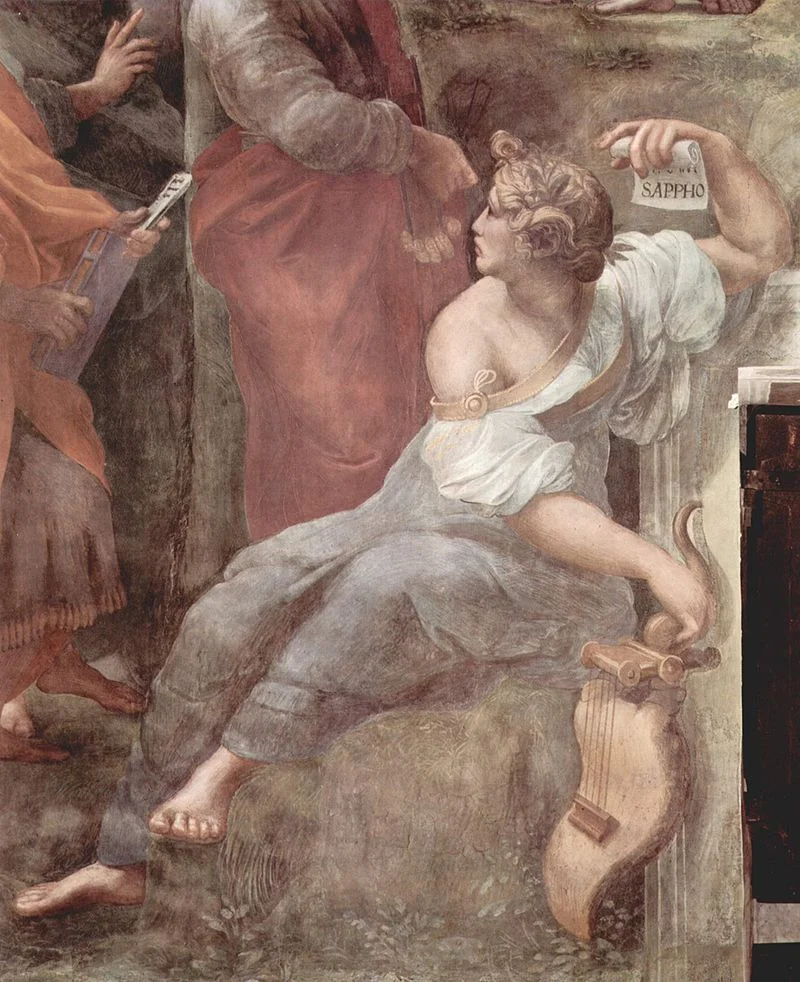
10. The window below the painting has a remarkable view
Did you notice that you can’t really see the entire Mount Parnassus in the painting? That’s because some of the mountains is blocked by a window in the Stanza della Segnatura.
What’s remarkable is that this window looks out on “Mons Vaticanus,” one of the 7 traditional hills of Rome and the hill after which Vatican City was named. This way, it appears as if Apollo is literally sitting on top of Vatican Hill if this window is opened!
